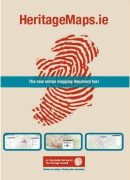
Ireland's Coastline Seaweed
Seaweed is gathered as food, processed and used as fertiliser, forms an ingredient in many cosmetics and spa treatments, and is the subject of biotechnological and pharmaceutical research. This poster/publication explores the contemporary and historical uses of seaweed, the role of seaweed in biodiversity and provides references for further information.
Read moreRead lessSeaweed is one of Ireland’s least-used resources. As an island with a 7,000 kilometre coastline, located in the warm and fertile waters of the Gulf Stream, we have an abundance of many
different kinds of seaweed. Although we currently use only a small fraction of Irish seaweed, this situation is changing.
Attention is turning to the sea as a source of food, energy, and raw material for the chemical and pharmaceutical industries. Ireland’s interesting history of harvesting seaweed is about to
begin a new chapter.
- Published by: The Heritage Council
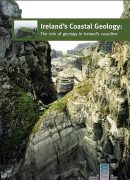
Ireland's Coastal Geology
Information leaflet on the geology of Ireland.
Read moreRead lessWhilst the coast offers excellent opportunities to see all types of geology in cliff exposures, it also shows thegeomorphology – the development of different coastal landforms. The range of landforms produced is enormous, and they are all dynamic – the changes which occur within people’s lifetimes are extremely rapid compared to some geological changes.
- Published by: The Heritage Council
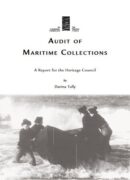
Audit Maritime Collections
This Audit of Maritime Collections was commissioned by The Heritage Council in July 2005 with the aim of assisting the conservation of Ireland’s boating heritage in both the maritime and inland waterway communities.
Read moreRead lessThe objective of the audit was to ascertain the following:
• The location of maritime and inland waterways collections in Ireland
• An overview of what is contained in each collection
• An indication, where practical, of the condition of each collection
• An indication, where practical, of the conditions in which each collection is stored
• Whether the collections also contain paper records (archives, plans, charts and maps, photographs and drawings)
• Ownership of each collection
- Published by: The Heritage Council
- Author(s): Darina Tully
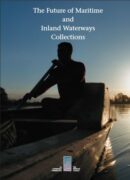
The Future of Maritime and Inland Waterways Collections: Seminar Proceedings
Proceedings of a Seminar held at the Radisson Hotel in Athlone, Co. Westmeath on Friday 13th October 2006.
Read moreRead lessFurther to its Audit of Maritime Collections and in support of its Museums Standards Programme for Ireland, the Heritage Council hosted a one-day seminar on the Future of Maritime and Inland
Waterways Collections in Ireland.
A selection of conservators, collectors, museum curators, and practitioners discussed the following themes:
• Maritime and Inland Waterway Collections are an intrinsic part of the Ireland’s heritage
• How can such collections be safeguarded in all their variety and number?
• How can decisions be made on what to retain?
• How can we move ahead to ensure a range of collections reflecting this important aspect of
our heritage?
- Published by: The Heritage Council
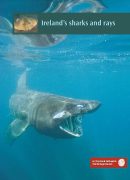
Ireland's Sharks and Rays
Sharks are some of the most threatened living creatures the ocean. Despite their fierce reputation, more people are killed each year worldwide by defective toasters than by shark attacks. Over 67 species of sharks, skates and rays live in Irish waters. Find out more with the Heritage Council poster, Ireland’s Sharks & Rays.
Read moreRead lessSharks and rays have been swimming the world’s oceans for over four hundred million years. That’s one hundred million years before the first dinosaurs appeared
on land!
A wide variety of sharks and rays inhabit Irish waters, including 39 species of sharks and 28 species of skates and rays. Members of this diverse group can be found in all our seas, ranging from shallow estuaries down to depths of 2000m or more in the Atlantic.

Jellyfish in our Coastal Seas
This publication examines the different types of jellyfish which can be found in Irish waters. The life-cycle of the jellyfish, their habitats, jellyfish as food for other marine animals, and their impacts on humans is also outlined.
Read moreRead lessIreland has five indigenous jellyfish species: Barrel, Blue, Common (Moon), Compass, and Lion’s Mane. A sixth species (Pelagia noctiluca) also occurs, but as it is an oceanic species it only occasionally makes an appearance in our coastal waters. Contrary to what you may think, jellyfish are not carried at the whim of ocean currents and tides on to our beaches. Many jellyfish maintain their positions by swimming down when the tide is going out, and swimming up when the tide is coming in. In this way they can stay in their preferred habitats.
- Published by: The Heritage Council

Ireland's Maritime Archaeology
This publication provides an overview of maritime archaeology from the Mesolithic period to the archaeology of the modern coastline.
Read moreRead lessIreland’s island story is written on its seashore. About ten thousand years ago, our first human
settlers – hunter-gatherers of the Mesolithic era - came here by boat. Since then, people have
lived, worked, travelled and buried their dead around Ireland’s coastal landscapes - using the
sea as a source of food, raw materials, as a means of travel and communications and as a place
to build communities.
- Published by: The Heritage Council

Ireland's Coastal Heritage
This publication highlights the threats to Ireland’s coastline, providing many little-known facts about our coastal heritage.
Read moreRead lessThe island of Ireland has a long and complex coastline in relation to its land area. This interface between land and sea contains some of the finest parts of our natural and man-made heritage. The natural heritage includes rocks, marine and coastal habitats and marine life, including plankton, shellfish, fish, seabirds, whales and seals. Our human heritage is rich and varied including coastal and island communities, traditional boats, historical fishing methods, shipwrecks, and coastal archaeology.
- Published by: The Heritage Council

Conserving Ireland's Maritime Heritage
The policy statement defines maritime heritage and outlines the main issues it faces, in particular those resulting from increasing human activity in the coastal zone. The document is divided into two parts, one dealing with the general principles, and the second section on specific aspects of maritime heritage.
A primary recommendation is the need for a cohesive strategy for the sustainable use and
development of marine and coastal areas, one which identifies important heritage features
and provides for their long-term protection. The strategy should be based on a comprehensive
review of relevant policies and measures currently in place and their efficacy to date and include
a management framework for environmental protection and management. Importantly, this
strategy should also be supported by a campaign to raise awareness and improve education
regarding maritime heritage.
- Published by: The Heritage Council
